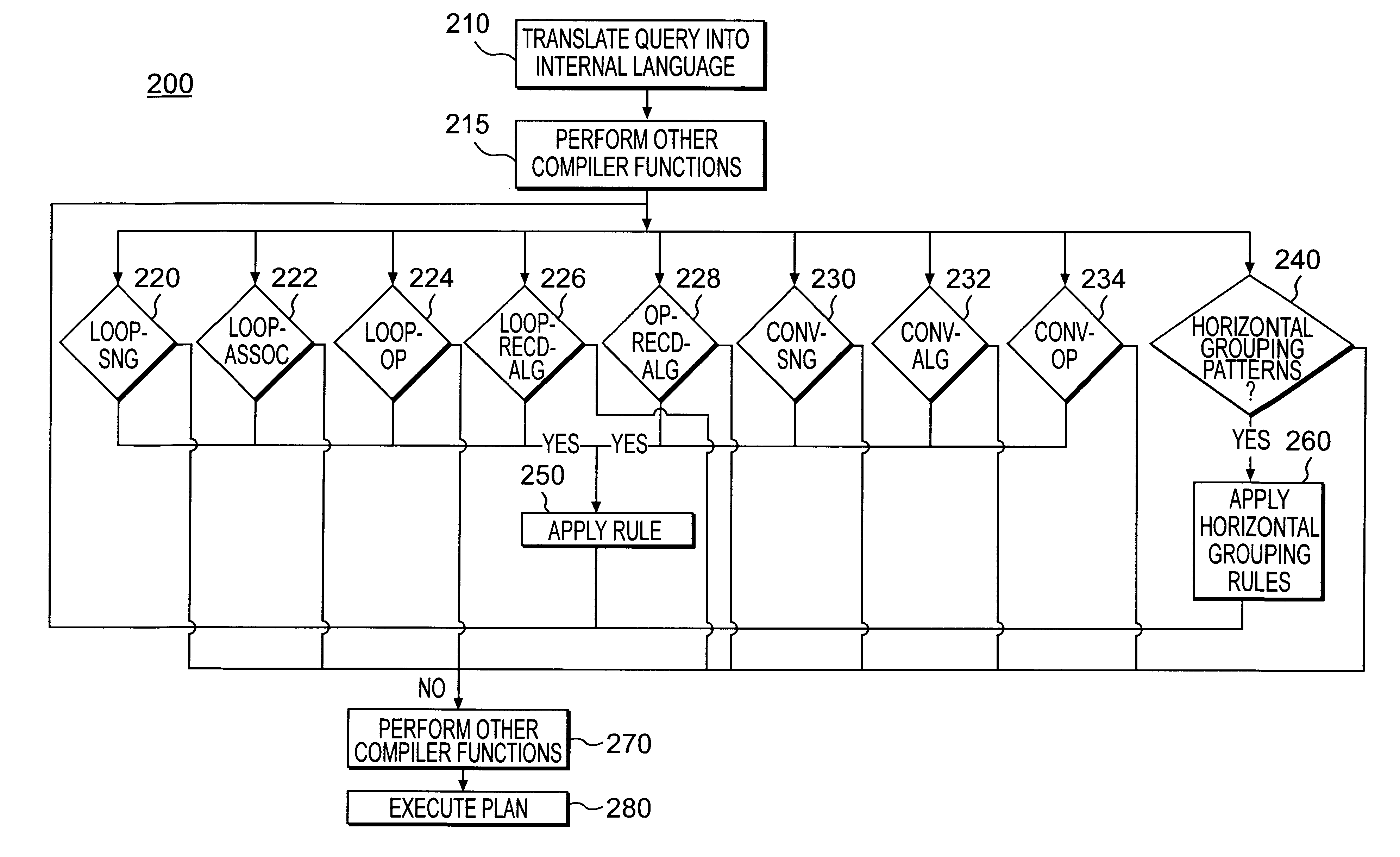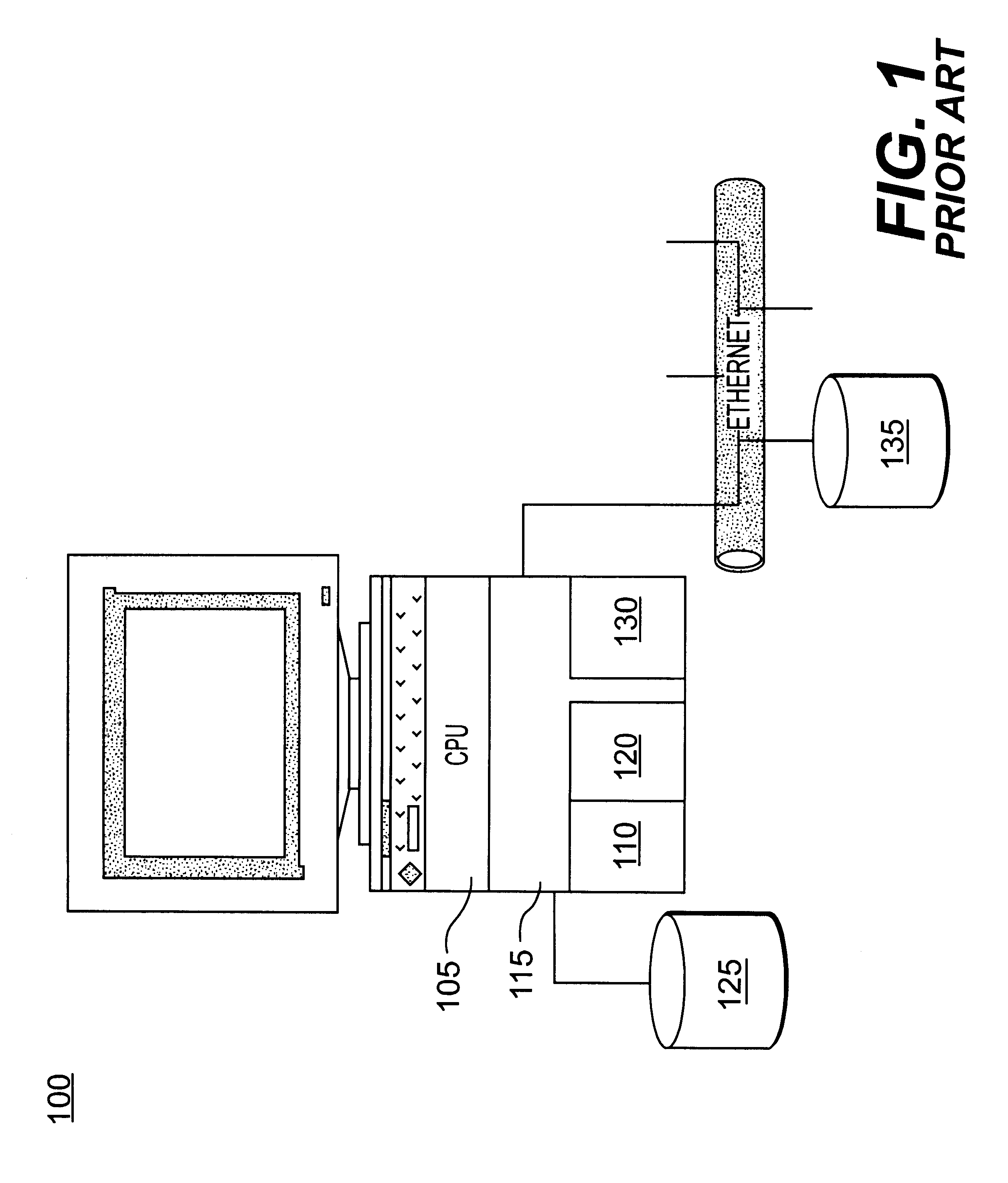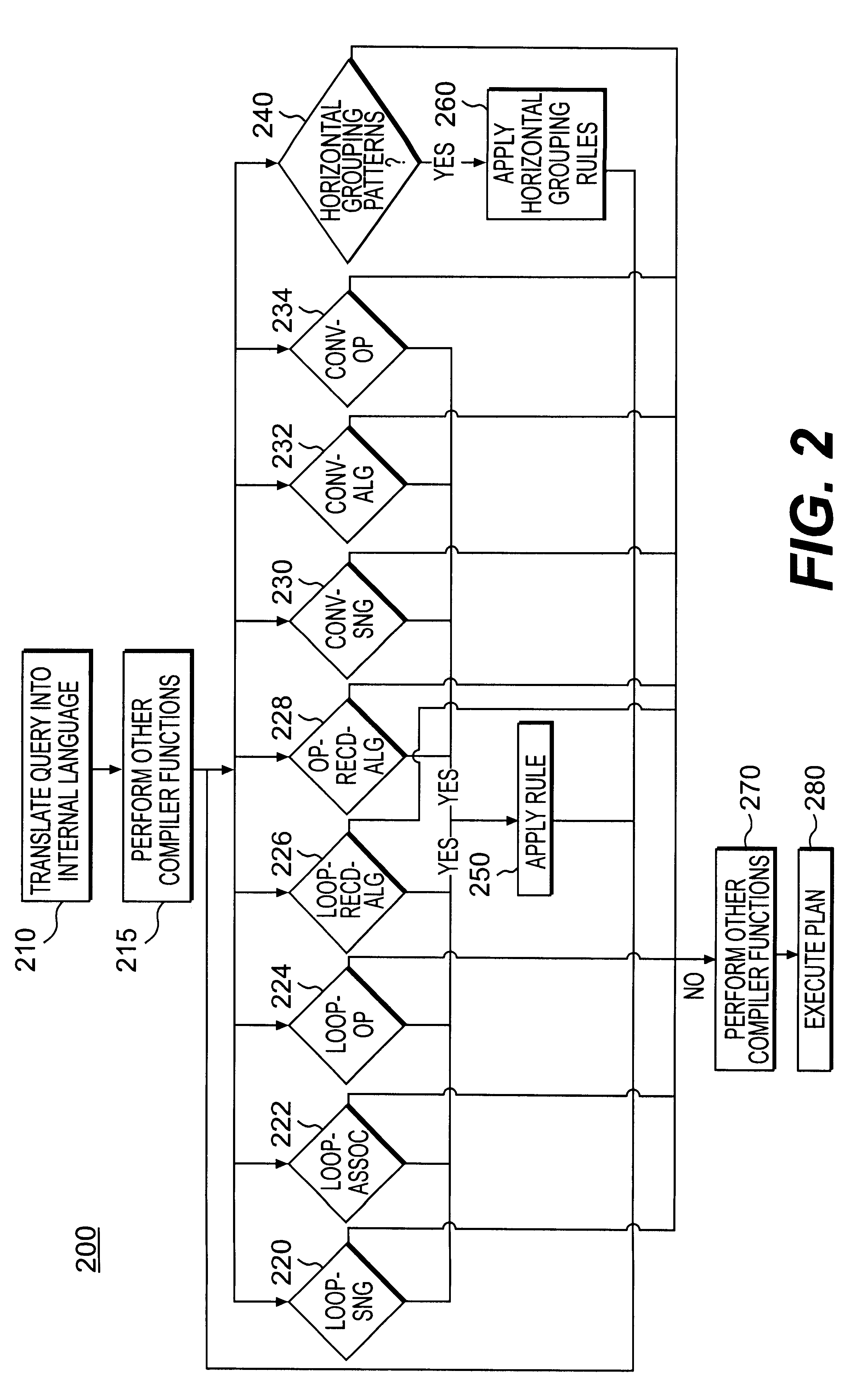System and method for optimizing queries with aggregates and collection conversions
a technology of aggregates and optimization methods, applied in the field of database queries, can solve the problems of consuming additional memory and computationally expensive intermediate collections
- Summary
- Abstract
- Description
- Claims
- Application Information
AI Technical Summary
Benefits of technology
Problems solved by technology
Method used
Image
Examples
Embodiment Construction
Reference will now be made to apparatus and methods consistent with this invention, examples of which appear in the following drawings. In general, the same reference numbers in different drawings refer to the same or similar elements. The following description is not intended to limit the scope of the invention, but rather to provide examples of that invention.
A. Overview
Systems and methods consistent with the present invention optimize database queries involving aggregates. FIG. 1 shows a data processing system 100 with CPU 105 that executes programs to allow a user to query databases, such as databases 110, 120 . . . 130, residing in main memory 115, disk 125, or in a network 135. A user would query the databases using a query language, such as SQL or OQL, that CPU 105 would compile or interpret.
Optimizing queries involving aggregates can substantially reduce the overhead of such queries. Optimization consistent with this invention involves identifying certain instantiations of q...
PUM
 Login to View More
Login to View More Abstract
Description
Claims
Application Information
 Login to View More
Login to View More - R&D
- Intellectual Property
- Life Sciences
- Materials
- Tech Scout
- Unparalleled Data Quality
- Higher Quality Content
- 60% Fewer Hallucinations
Browse by: Latest US Patents, China's latest patents, Technical Efficacy Thesaurus, Application Domain, Technology Topic, Popular Technical Reports.
© 2025 PatSnap. All rights reserved.Legal|Privacy policy|Modern Slavery Act Transparency Statement|Sitemap|About US| Contact US: help@patsnap.com



